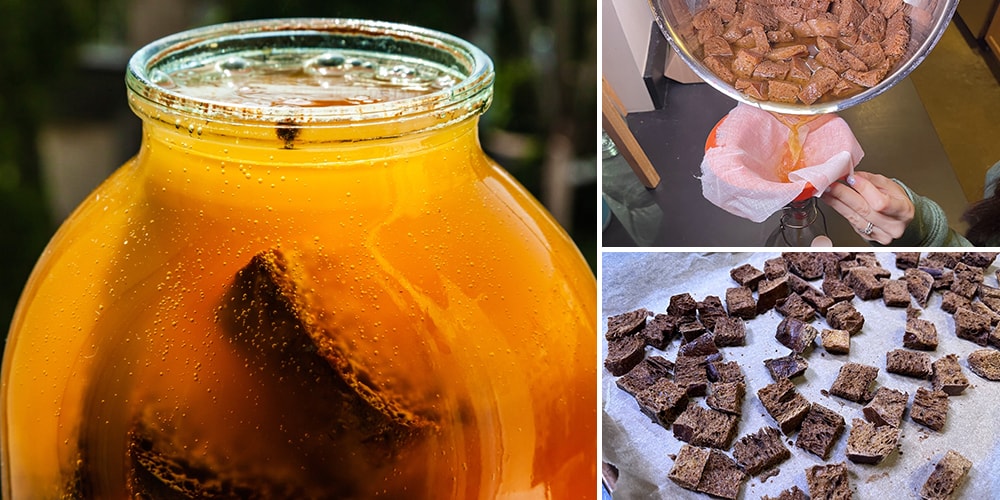
DIY Fermented Water
It’s no secret that adding fermented foods and beverages to your diet can improve your gut microbiome and enhance your health. While most of us have heard of kombucha and kefir, few people know about kvass – a fermented water-based drink originating in Eastern Europe.
Like most old Eastern European recipes, kvass comes in different varieties and can be made with a bunch of different ingredients, however, the main staples are the same. In this post, I want to explore how you can start making kvass at home in a few easy steps. I’ll share some different versions of kvass ingredients so you can experiment with different flavors and additions.
Before the week is over, you’ll be able to enjoy your very own refreshing, bubbly, soda-like malt beverage full of healthy bacteria for your gut.
What is Kvass?
Kvass, a mildly alcoholic beverage, is crafted through the process of lacto-fermentation. This method involves the transformation of sugars present in the ingredients into lactic acid, giving kvass its distinctive flavor and character. Unlike popular fermented drinks, such as kombucha, kvass does not require you to have any special SCOBY or bacteria starter on hand – all you need is a few simple ingredients!
Kvass originated in Eastern Europe and has been a cornerstone of Russian cuisine for over a thousand years. It likely started with people not wanting to waste stale bread and vegetables. So they found a way to make a beverage out of them.
Back in those days, water wasn’t always safe to drink, so people had to resort to making beer, wine, and other fermented drinks – like kvass – to make the water safer (and tastier!) to consume.
Unlike beer and wine, kvass has a low alcohol content. Depending on how long you allow it to ferment, it can go from 0.5% to 2.5% alcohol content. This made kvass a great family-friendly option for a refreshing beverage without the woozy effects.
Today, kvass continues to be a staple in Eastern European countries, often sold in stores just like soda. The most popular style of kvass is bread-based, however, there are lots of other ingredients that can be used in place of bread to make this effervescent drink.
Health Benefits of Kvass
In addition to being a delightfully tasty beverage, kvass is full of health benefits. Thanks to its fermentation process, it is full of prebiotics and probiotics which keep your gut microbiome happy. Kvass also contains a high amount of B vitamins, specifically B12, which helps support a healthy immune system and protects the nervous system. If you’re looking to add more antioxidants to your diet, look no further – kvass is full of antioxidants from the bread and grains as well as any additional fruits and veggies that you’ve added to your jar. Worried about sugar content? Despite the amount of sugar that goes into making kvass, it becomes a low-sugar drink by the time the fermentation process is complete.
⇒ The Fermented Soup – The Long Lasting Soup That Should Be In Every Stockpile (Video)
DIY Fermented Water (Kvass)
The Main Starch
Since making kvass involves lacto-fermentation, your main ingredients need to contain sugars and starches. For this reason, the following are popular “base” ingredients for kvass:
- Bread – ideally dark rye or sourdough bread
- Starchy vegetables like beets, radishes, and sweet potatoes
- Fruits like apples and berries
As you can imagine, your kvass will have a different flavor profile depending on the base you choose. Bread kvass is the most popular, and has a malty flavor similar to root beer. Beet kvass is another common version of kvass that tastes more salty and works great as a refreshing sports drink. Fruit-based kvass is sweet and wine-like.
The Fermentation Starter
As mentioned earlier, kvass doesn’t require you to have any special starter on hand, but it does require the presence of yeast to get the process going. Most of the base ingredients like bread and organic fruits and vegetables have naturally occurring yeasts.
However, modern store-bought breads and produce may not have the same amount of yeast as our ancestors’ versions. Some vegetables are treated with pesticides that kill off any yeast on their surface. A lack of good yeast in your ingredients can lead to a flatter kvass and a much slower fermentation.
For this reason, I recommend adding a bit of yeast or fermented juice to your kvass to help the process get going, especially if you’re using store-bought ingredients.
For your fermentation starter, you can use one of the following:
- A dry yeast packet or 1 tsp fresh baker’s yeast
- A tablespoon of active sourdough starter
- A few tablespoons of kombucha
- A few tablespoons of kimchi or kraut juice
Flavor-Boosters
Once you have your base ingredients and your “extra yeast,” all you need is water. However, some people like to add extra flavor to their kvass to make it sweeter, tangier, or fresher-tasting.
Traditional bread kvass is often enhanced with raisins to give it a slightly sweeter profile. I’ve found that adding blueberries to kvass can give it a certain richness and boost the vitamin content. Herbs like rosemary, mint, and fennel can also add a lot to your beverage. Consider dried fruits like prunes and dried apricots since they pack a big flavor and provide the yeast with extra sugar.
Don’t be afraid to experiment! Your kvass will be tasty no matter what you do, and you can get as creative as you want with it.
Bread Kvass Recipe
Here is a simple bread kvass recipe that I like to make. This recipe is a great way to dip your toes into the world of kvass fermenting and get a taste of the traditional Eastern European favorite.
Any bread scraps will do. I used marble rye bread and a few slices of plain sourdough for this recipe.
Ingredients:
- 4-5 slices of bread
- 1 packet of instant dry yeast
- 1 tsp sugar (to activate dry yeast)
- ¼ cup of raisins
- 1 liter of boiled water (4 ½ cups)
Instructions:
- Preheat your oven to 350 degrees F.
- Cut bread into cubes, about 1 inch in length.

- Place bread cubes on a baking sheet and bake in the oven for 20-30 minutes. Don’t be afraid of toasting it too long – the darker it looks – the better. Toasting the bread caramelizes the sugars and prepares them for better fermentation.

- Place the toasted bread into a large bowl and cover with boiling water. Let it rest for at least 4-8 hours at room temperature. This process extracts the sugars and yeasts into the water.

- In a small bowl, combine dry yeast with sugar and lukewarm water to activate it (make sure to follow the instructions on the packet). Let it stand for 10 minutes until it starts to bubble.
- In the meantime, use a cheesecloth to strain the water from your bread mixture into a glass jar. You can also use a clean plastic bottle. Make sure to squeeze the wet bread through the cheesecloth to get every drop of goodness out of it.

- Add your activated yeast to the jar.
- Add the raisins to the jar.
- Close the lid and leave the jar at room temperature for 5-7 days, burping it occasionally as the kvass will create pressure. You can taste-test it after 3 days to see how long you want it to keep fermenting. Everyone likes their kvass a little differently but I recommend at least 5 days of fermentation.

- Once the kvass is ready, use a cheesecloth to strain it into a soda bottle and place it in the fridge. Soda bottles are best for this because they can accommodate changing pressures.

The kvass is good to drink once it’s been refrigerated! The refrigeration process stops fermentation (for the most part) so the flavor and alcohol content should stay fairly stable at this point. Enjoy!
How To Consume Kvass
Once your kvass is refrigerated, it should stay fresh for 1-2 weeks. Keep in mind that some additional fermentation may continue to take place even when it’s refrigerated, so don’t be surprised if the flavor becomes stronger as the days go on.
The simplest way to consume kvass is to simply drink it like soda (without the guilt!). As we discussed, kvass is much healthier than typical soft drinks, but the experience is quite similar. You can have 2-3 cups per day.
Another traditional way that kvass is consumed is in the form of cold soup. Several cold soup recipes from Russia and Ukraine utilize kvass as the base of the soup, such as Okroshka. It may sound weird, but it’s incredibly refreshing in the summer heat.
Kvass can also be used in other recipes, such as salad dressings, cocktail mixers, and root-beer-style floats. Get creative with it!

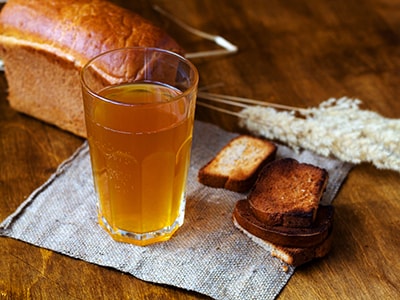
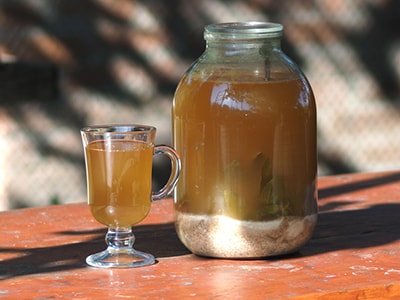
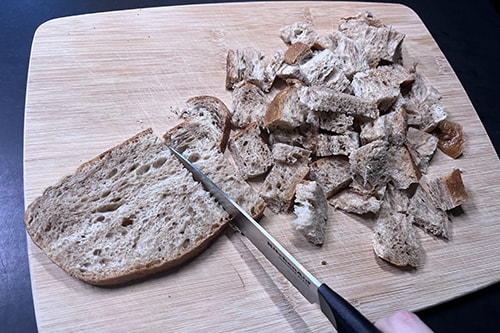
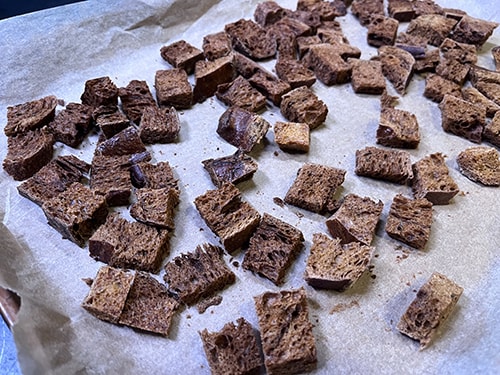
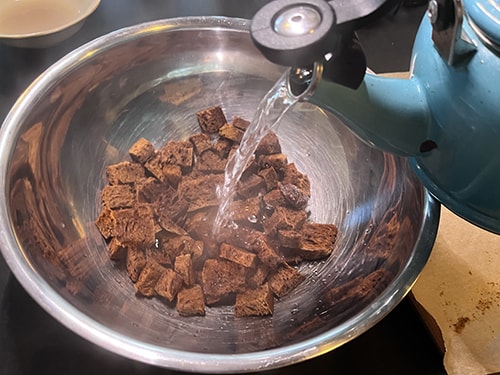
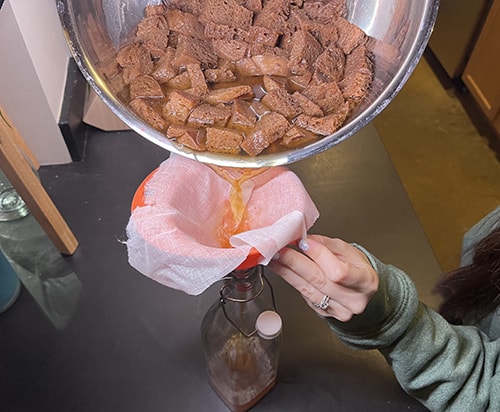
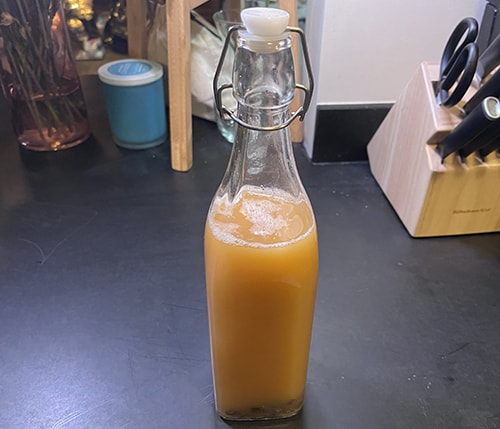
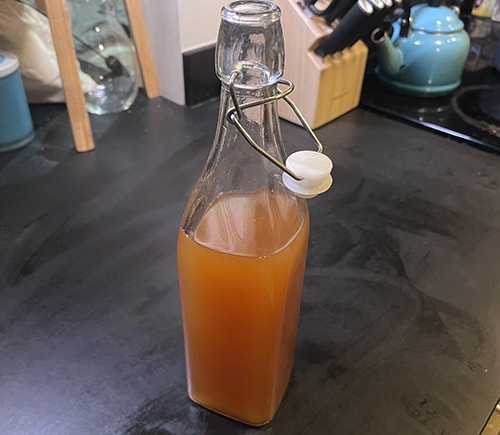
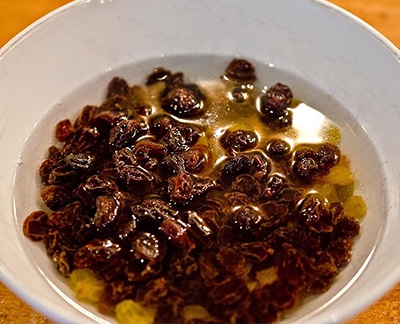
I love this kind of articles. Is a very good option of putting probiotics in our bodies, knowing what is in.
Nice article, good information. Like the tidbits of historical background and photo-instruction into Kvass. Thanks!
What about those of us with celiac disease and can’t have breads? Can a gluten free bread work just as well?
I ha e read in my sourdough baking group that sourdough does not have the gluten that yeast breads have. Research it to know for sure.
i am very interested in trying to make this, thank you for the info i would also liketo have the book in paper hard copy ( NOT EBOOK )
Hi I was wondering if you sell Kvass already made. I would like to buy some. Thank you
Regard : Motootua Hoover
Lisa, I have found a pre 1950 wheat. Will probably make sourdough bread with it. Like you, I swore off all wheat. This wheat is called Harvest Wheat from Sunrise Mills in MN. Made pancakes from some discard. Was very nice, and NO reaction. Hope to make sourdough in the next day or so. Hoping to make Kvass from my own bread maybe next week.
How would you go about making Kvass using fruit?
Has anyone tried to use pumpernickel bread?
Do you have a beet kvass recipe?
I’m considering about the alcohol, the affects on the liner heath,
Meant to say liver.
After you’ve made one batch, can you use some as a starter for the next batch or do you have to start over from scratch?
I would also like to know the answer to this.
I can’t eat white sugar. I usually use coconut sugar, honey or maple syrup. Can any of these be substituted?